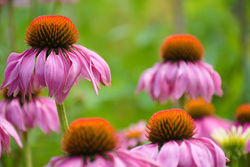Deadheading lavender: How, when and why
- Lars Wildes
- Jul 26, 2023
- 3 min read
Deadheading, the process of removing spent flowers, is an important task in maintaining a vibrant and healthy lavender plant.
By deadheading, you not only promote continuous blooming but also prevent the plant from expending unnecessary energy on seed production. And it’s a great way to get a second (even a third) flowering from your lavender.
Should I cut back lavender after it blooms?
Yes, cutting back lavender after it blooms is highly recommended, especially if you want a second flowering.
Deadheading and pruning lavender after its flowering period is an essential part of lavender plant care and maintenance. By doing so, you can promote healthier growth, encourage more blooms, and keep the plant looking attractive.
Promotes re-blooming: Deadheading (removing spent flowers) encourages the plant to produce new flower buds. This process stimulates the lavender to bloom again, extending the flowering period.
Enhances plant health: Removing faded flowers prevents the plant from expending energy on seed production, directing its resources towards new growth and overall plant health.
Maintains shape and bushiness: Regular pruning and deadheading help keep the lavender plant compact and bushy. This creates a pleasing appearance and prevents the plant from becoming leggy and woody.
Prevents self-seeding: If lavender is not deadheaded, it can produce seeds that may lead to self-seeding in your garden. Deadheading prevents excessive seed dispersal, controlling the plant's spread.
The right time to deadhead lavender
The ideal time to deadhead lavender is when the flowers have faded and begun to dry out, but before they go to seed. Depending on your area, this can be anywhere from the end of June through to August.
Deadheading during the blooming season encourages the plant to produce new flowers and extend the overall bloom period. When your lavender flowers are starting to turn gray, that’s when you know it’s time to deadhead.
The tools you’ll need:
Pruning shears: Use a sharp and clean pair of pruning shears to make precise cuts without causing damage to the plant.
Gardening gloves (optional): Lavender flowers can be delicate and easily crushed, so wearing gloves is recommended.
Step-by-step deadheading process for lavender
Follow these detailed steps to remove spent flowers from your lavender.
Step 1: Inspect the Plant
Carefully examine your lavender plant to identify flowers that have started to fade and dry out. Focus on these flowers during the deadheading process.
Locate the base of the faded flower stem, just above the first set of leaves or nodes.

Step 2: Cutting the Spent Flowers
Using your pruning shears, make a clean, angled cut about 1/4 inch (0.6 cm) just above the first set of leaves or nodes.

This technique helps the plant heal faster and minimizes the risk of disease.
Step 3: Removing Spent Stems
If entire stems have finished blooming and no new buds are forming, consider cutting these stems back to the main plant. However, make sure not to cut into the woody part of the stem near the base.
Step 4: Collecting and Disposing
As you deadhead the lavender, collect the faded flowers and any plant debris and dispose of them appropriately. This helps prevent potential pest and disease issues.
You can also dry the flowers out or put them in vases around your house. Lavender is a very calming scent; we like to keep a sachet of it in the bathroom closet.
After-Deadheading Care
After deadheading, give your lavender plant some extra care to support healthy growth and encourage continuous blooming:
Watering: Water the lavender lightly after deadheading, ensuring the soil remains moist but not waterlogged.
Fertilizing: Apply a balanced, water-soluble fertilizer to give the plant essential nutrients for continued growth.
Mulching: If you’re in a particularly dry climate, add a layer of organic mulch around the lavender to retain moisture and suppress weed growth.
Regular Deadheading Routine
To maintain a productive lavender plant, stick to a regular deadheading routine throughout the blooming season. Check your lavender plant every few days and remove spent flowers promptly.
Deadheading lavender is a simple process… so don’t try to make it super complicated. These are pretty hardy plants, so you can’t really damage them without doing something absolutely crazy.
By following this step-by-step guide, you can stunning blooms all summer long. Happy deadheading!






Comentários